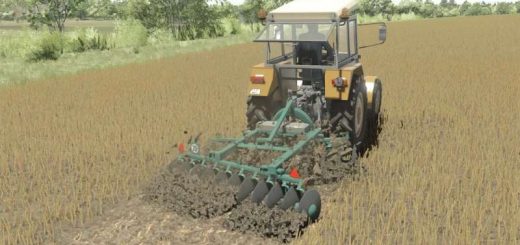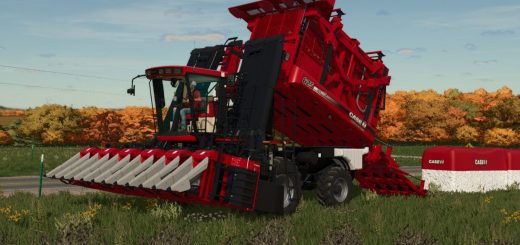Explaining Riverbend Springs Map on Farming Simulator 25
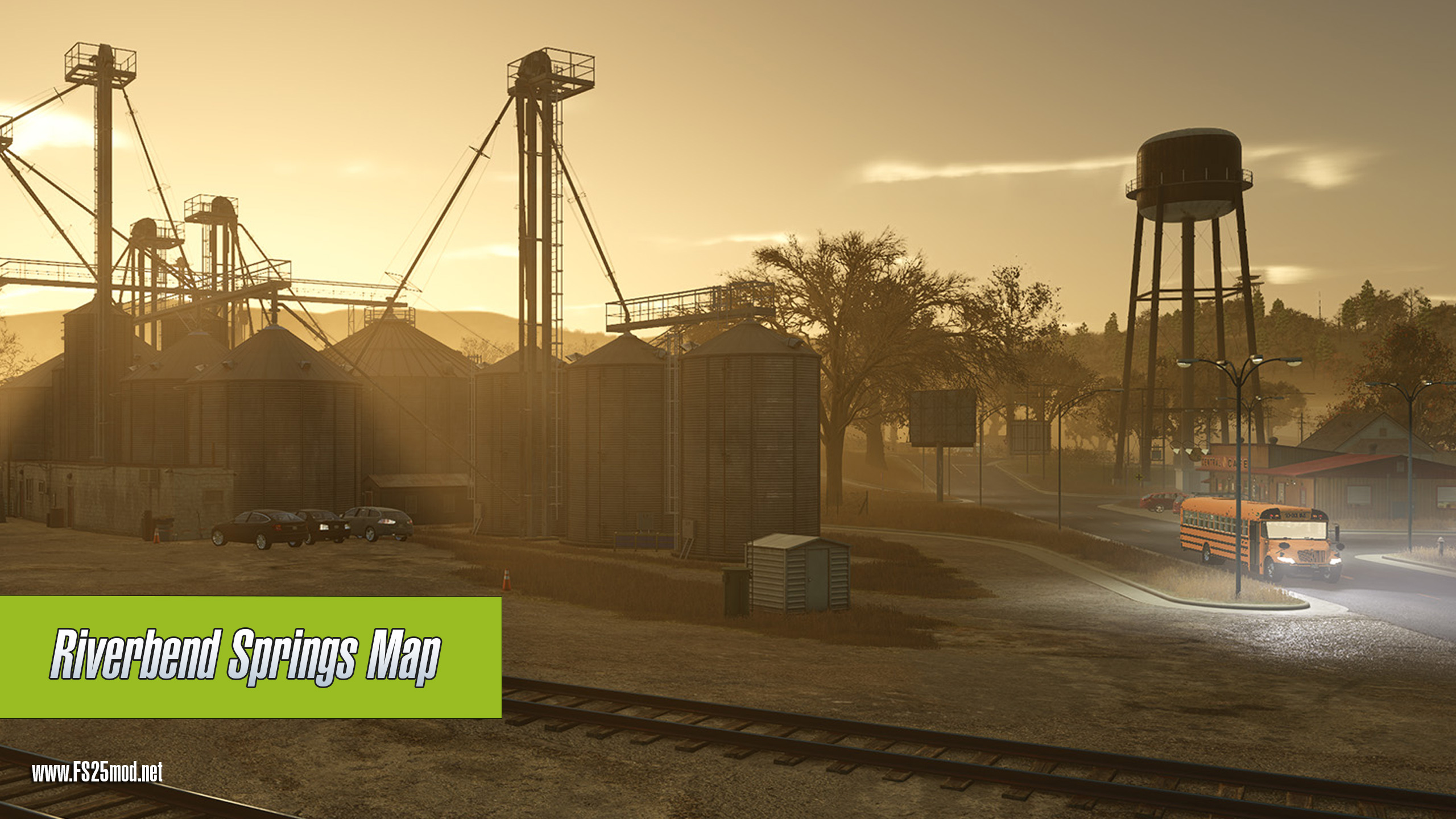
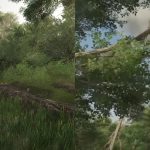
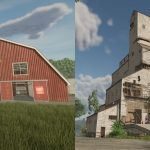
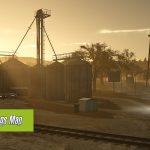
Explaining Riverbend Springs Map on Farming Simulator 25
Farming Simulator 25 is coming soon – with it, and we will also play some new maps! On FarmCon 24, an event for Farming Simulator games, GIANTS Software has featured its brand new US map. It’s called Riverbend Springs, and this map showcases some of the brand-new game features we are quite excited to try out. Riverbend Springs should feel genuine and advanced and let the players experience the best this game can offer.
Let’s take a deeper dive and examine the Riverbend Springs map and its offerings.
It’s all about the water
The hints were all there: the “river” and the “springs”. Yes, this map is all about the water. The map is located in a riverbend, and plenty of smaller water bodies incorporate it, such as brooks and streams. If you use this water well, it can be extremely useful. The brand-new dynamic gameplay elements, like grain elevators, can help you use the river as a source of transport. Simply dock and load the grain and use the piers and boats to your advantage. Docking stations will be helpful for the farm, and including floating restaurants could be very good for the business. If done well, with mods or without, this map can make the best out of water and the infrastructure it can support.
Unlike in some maps in the previous games, water is more than just a nice background or a general aesthetic. There’s going to be plenty of function. Small barriers (known as weirs), waterwheels that work, and ships will offer you opportunities to make the best out of your surroundings. The ferries are perhaps the most exciting feature – making navigation a lot easier, letting you board the tractors and get them past the waterways. It’s similar to trains but possibly a lot more fun.
New generation graphics
The Giants Engine 10 brings a lot of new graphical changes, and the Riverbend Springs map showcases many of them. Each type of tree has a lot of distinction, and even the individual trees are all ever so slightly different from one another, the way it is in real life. Crowns, branches, and leaves now interact with the light.
Crops are a similar story, as they are significantly improved in detail and offer new high-resolution textures. Crop details, foliage, and ground textures have all been revamped. Ground textures are a lot more detailed and varied, and even the smallest foliage now has distinct and constantly changing shadows. Plus, there’s a fidelity improvement: with a lot more pixels dedicated to making the plants look good, the overall look of the Riverbend Springs map shows a massive leap from the previous game. If your PC can handle it, that is.
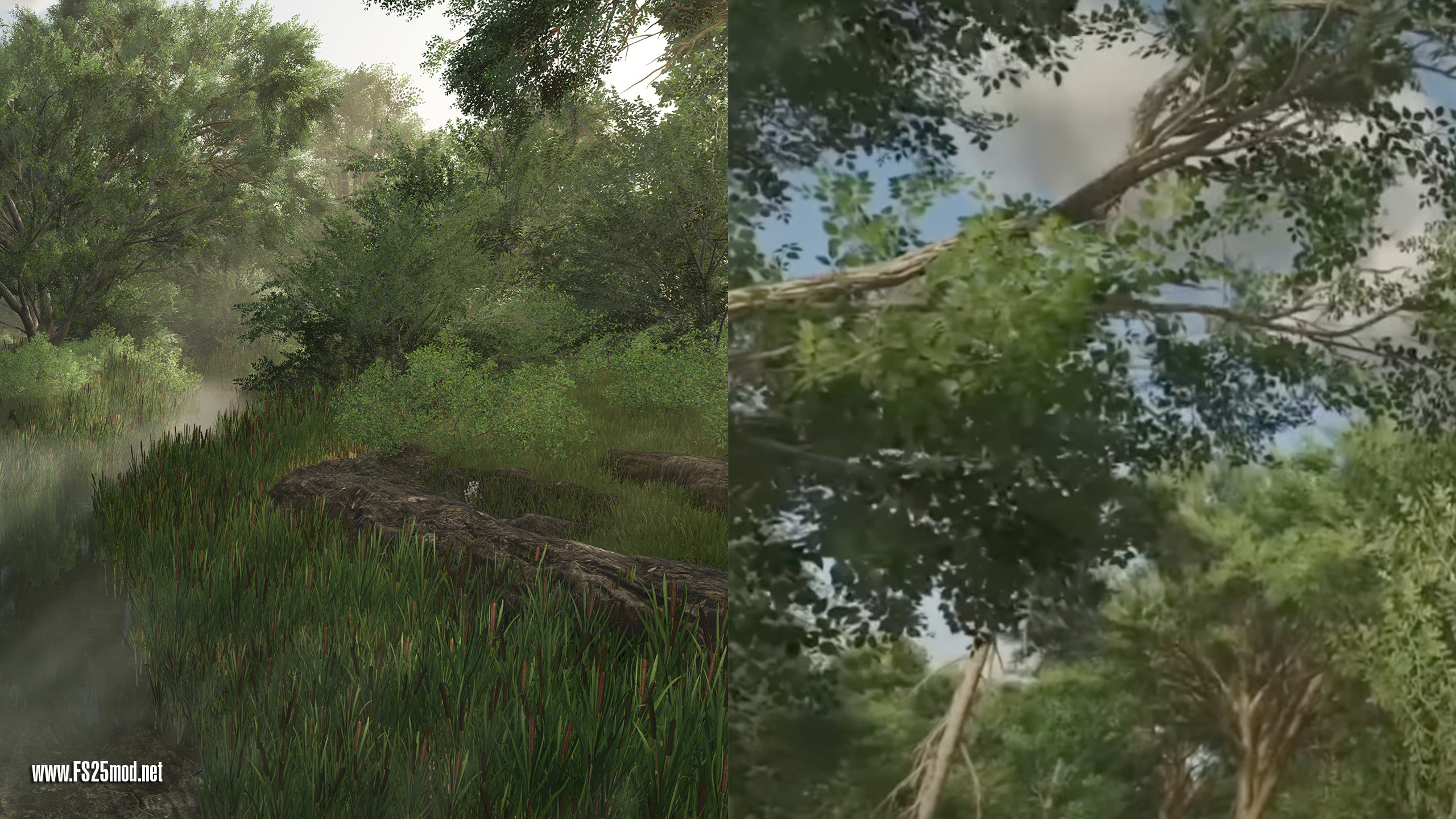
Buildings and the environment are now more realistic
Building designs have also been improved by a lot, and it absolutely shows on the new map. The resolutions have improved across the boards, but it’s not just the same models with more pixels. Rust spots, gradual wear, and water damage are all visible. What’s even more, these new textures show actual use – they are not there to simply show that the building is completely run down. This thoughtful balance helps make the Riverbend Springs map look a lot more genuine.
The number of buildings on the map has increased as well. A stretch of buildings is significantly longer than in previous games, and various parts of the settlement connect with each other seamlessly, creating a genuine ambiance that was missing from the previous releases. There are a lot more fences and other additional elements, which can be mixed, matched, and edited to your heart’s content, adding plenty of room for your own specific ideas.
Production sites and markets for you to use
Introducing interactive farmer’s markets marks a new level of engagement and immersion. Players can deliver produce like tomatoes, watching empty shelves and display baskets fill up as they supply the market. This passive and interactive income model extends the gameplay loop, making the journey from field to table more tangible.
Furthermore, the flexibility to set up small-scale production sites on one’s farm—such as a carpentry shop or cheese factory—emphasizes the game’s macro and micro-level integration. These small production units mirror the functionality of larger factories, bringing economic simulation aspects closer to the player’s everyday farming operations.
Nostalgic buildings and improved wood processing
Riverbend Springs map on Farming Simulator 25 plays the right nostalgia chords, including an iconic old barn, grain elevator, and wooden structure styles – all of which are a part of classic American agricultural lore. They are not just there to sit pretty, though: the environment is there to be explored and interacted with. There’s very little room for “useless” things here.
Some players will notice the Riverbend Springs map taking some elements from Silverrun Forest DLC, making the forestry a lot more fleshed out. This means automated floating log management, making use of sawmills, and helping you create a dynamic business in a dynamic environment.
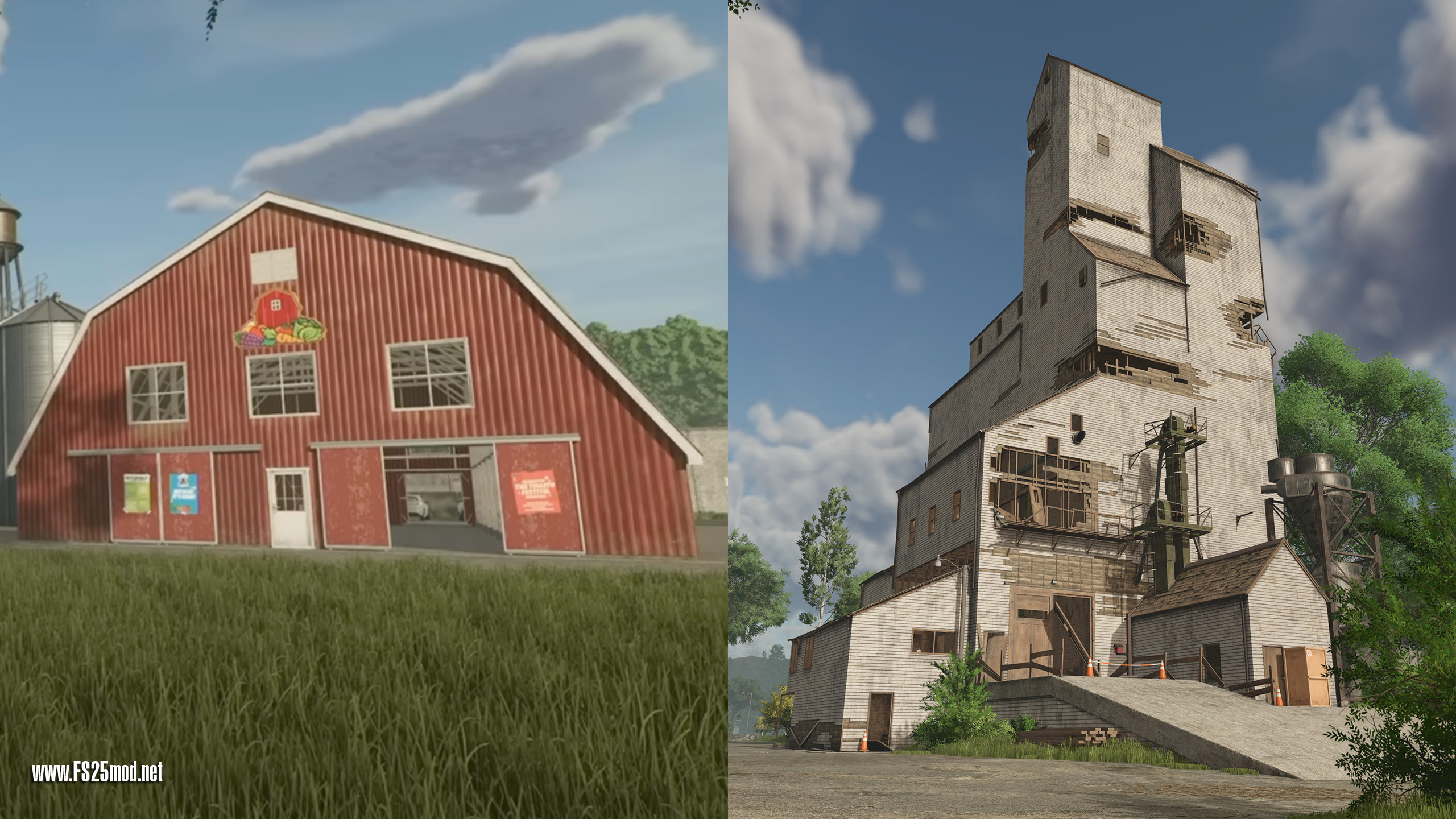
Riverbend Springs map is a leap
The new Riverbend Springs map is exciting not only to the players but to the developers as well. After seeing the presentations from GIANTS Software, we can see why. It’s not just a simple new map – it’s also a showcase of just about every new feature added to the new game. Detailed environments, a massive new range of interactive elements, and plenty of new ways to build and improve your farm offer plenty of fun for the players to try. It’s also an excellent training ground for modders, who are undoubtedly waiting for the opportunity to push the possibilities of this map even further.
We can’t wait for the Farming Simulator 25 to come out and try our Riverbend Springs ourselves. If it’s everything it’s looking to be, this is supposed to be an excellent experience, blending everything we know and love from the previous games and taking it to the next level.

